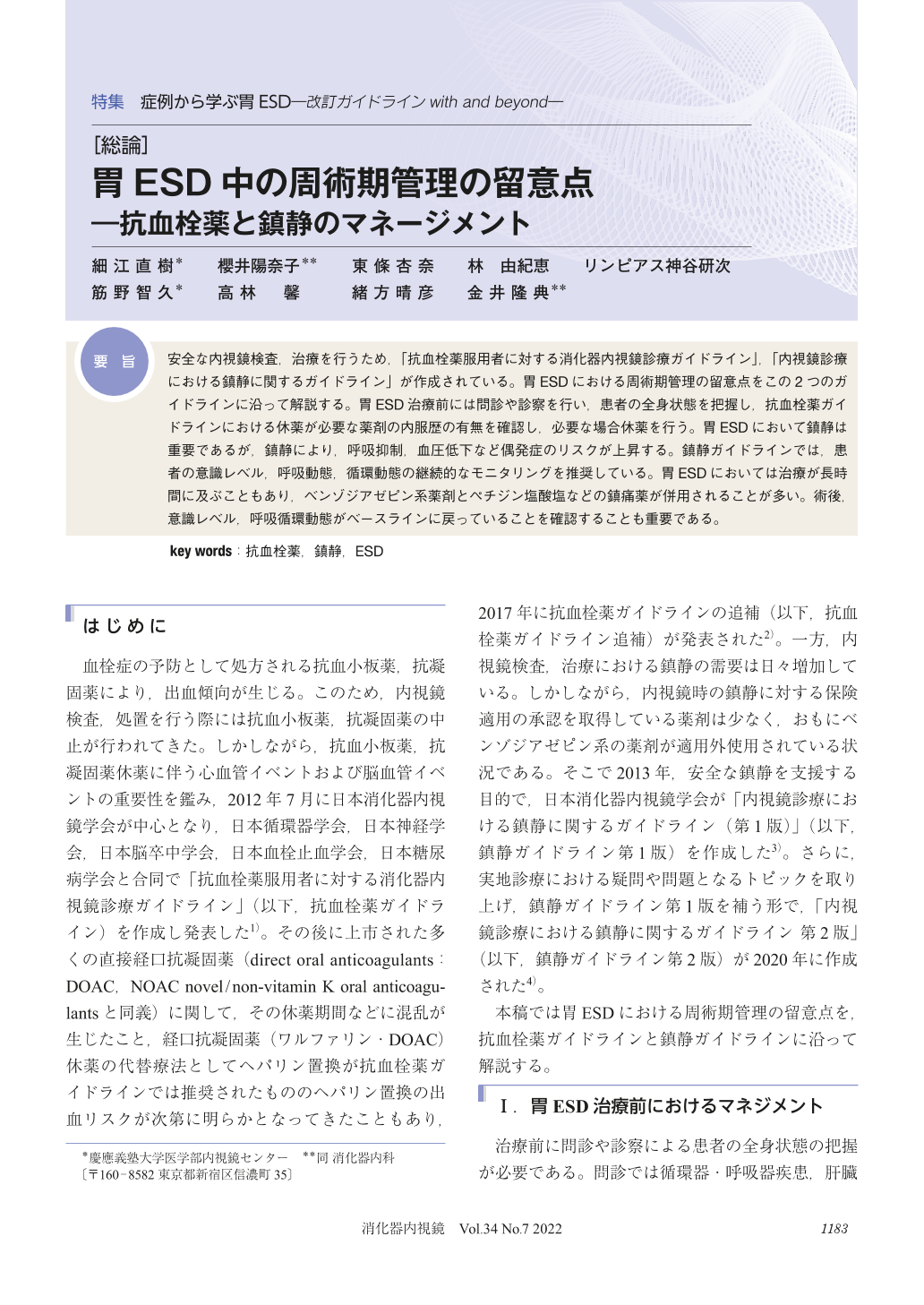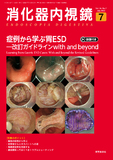Japanese
English
- 有料閲覧
- Abstract 文献概要
- 1ページ目 Look Inside
- 参考文献 Reference
要 旨
安全な内視鏡検査,治療を行うため,「抗血栓薬服用者に対する消化器内視鏡診療ガイドライン」,「内視鏡診療における鎮静に関するガイドライン」が作成されている。胃ESDにおける周術期管理の留意点をこの2つのガイドラインに沿って解説する。胃ESD治療前には問診や診察を行い,患者の全身状態を把握し,抗血栓薬ガイドラインにおける休薬が必要な薬剤の内服歴の有無を確認し,必要な場合休薬を行う。胃ESDにおいて鎮静は重要であるが,鎮静により,呼吸抑制,血圧低下など偶発症のリスクが上昇する。鎮静ガイドラインでは,患者の意識レベル,呼吸動態,循環動態の継続的なモニタリングを推奨している。胃ESDにおいては治療が長時間に及ぶこともあり,ベンゾジアゼピン系薬剤とペチジン塩酸塩などの鎮痛薬が併用されることが多い。術後,意識レベル,呼吸循環動態がベースラインに戻っていることを確認することも重要である。
To ensure safe endoscopic examination and treatment, “Guidelines for gastroenterological endoscopy in patients undergoing antithrombotic treatment” and “Guidelines for sedation in gastroenterological endoscopy” have been developed. In this article, we overview the perioperative management for gastric ESD in accordance with these two guidelines. Prior to gastric ESD, the patient’s general condition should be assessed by interview and physical examination, and the presence or absence of a history of medication withdrawal required by the guidelines for antithrombotic agents should be confirmed, and if necessary, medication withdrawal should be performed. Sedation is important in gastric ESD, but sedation increases the risk of respiratory depression, hypotension, and other complications. Sedation guideline recommends continuous monitoring of the patient’s level of consciousness, respiratory and circulatory dynamics. In gastric ESD, treatment may be prolonged, and analgesics such as benzodiazepines and pethidine hydrochloride are often used in combination. It is also important to ensure that the patient’s level of consciousness and respiratory and circulatory status have returned to baseline postoperatively.

© tokyo-igakusha.co.jp. All right reserved.


